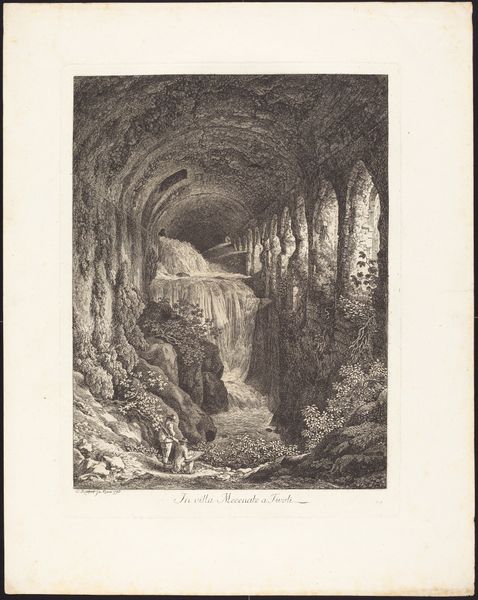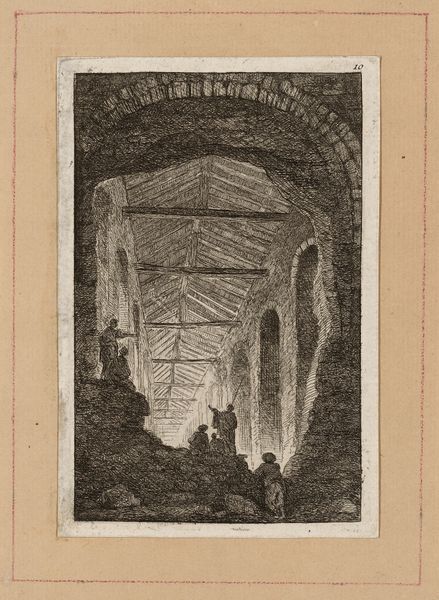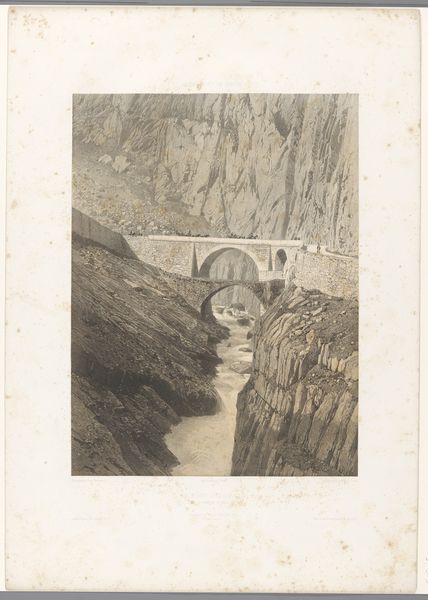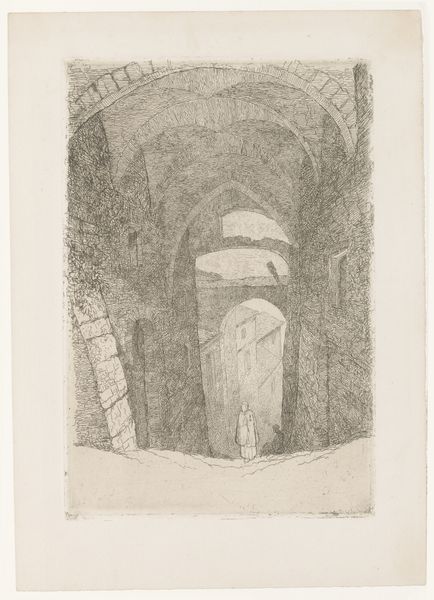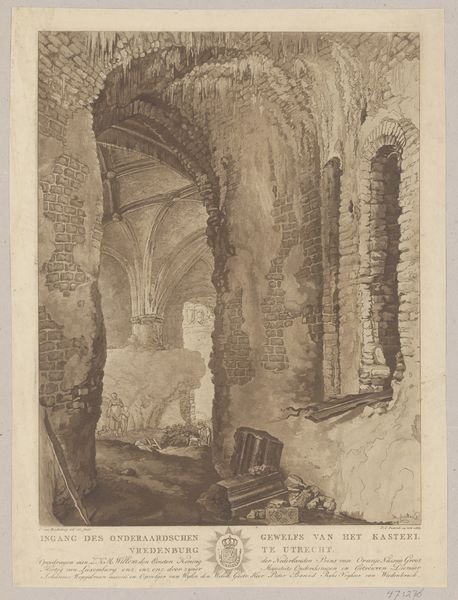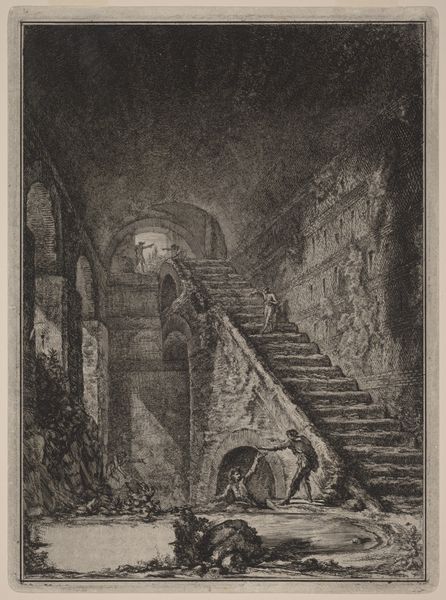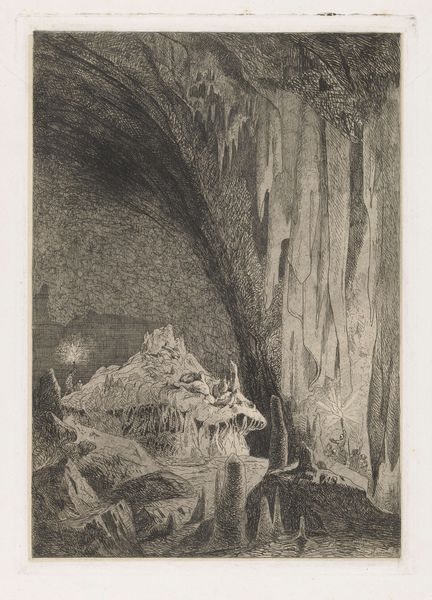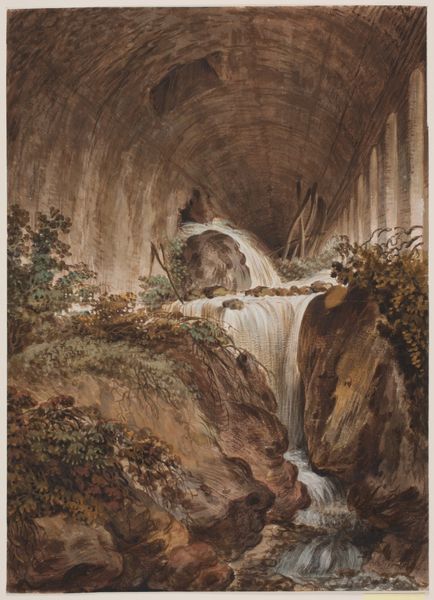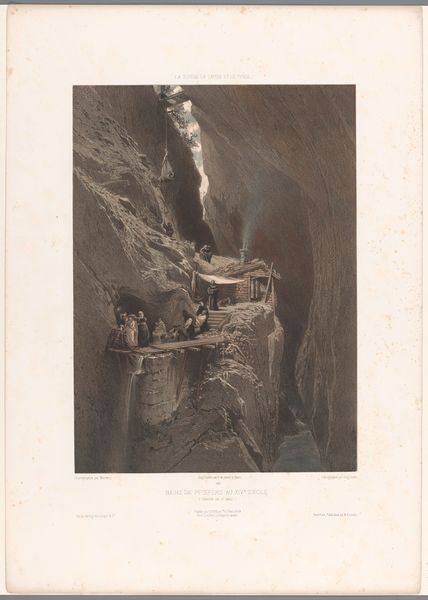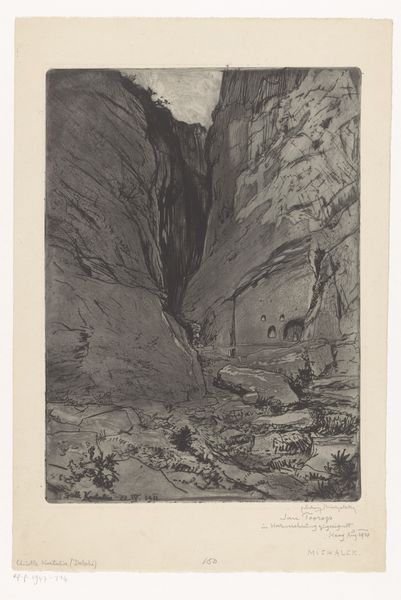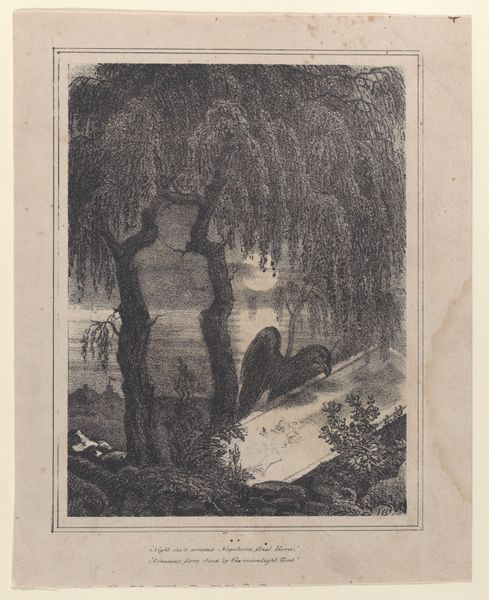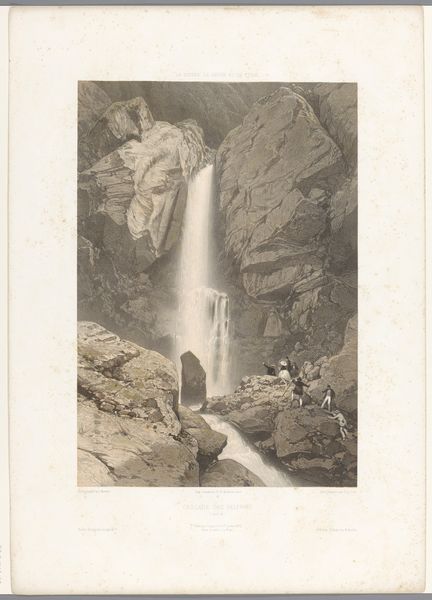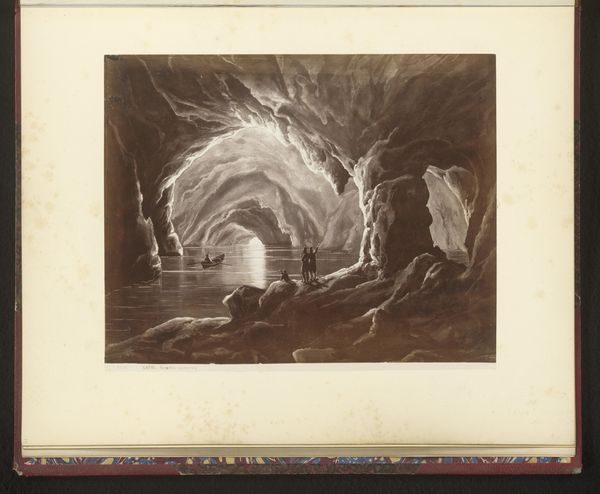
drawing, pencil, charcoal
#
drawing
#
neoclacissism
#
landscape
#
charcoal drawing
#
pencil drawing
#
pencil
#
charcoal
Dimensions: 17 15/16 x 12 5/8 in. (45.6 x 32 cm)
Copyright: Public Domain
Editor: This is Louis Chaix's "The So-Called Stables of Maecenas at Tivoli," created between 1750 and 1811 using pencil and charcoal. There's a compelling contrast between the rough, natural forms of the waterfall and the geometric, almost oppressive, structure surrounding it. What stands out to you? Curator: For me, this work speaks volumes about the labor inherent in Neoclassicism’s relationship with the ancient world. Consider the ‘so-called stables’ – ruins that become a site of industry, fueling the artist's production. Note the specific use of readily available materials like charcoal and pencil, implying the drawing was perhaps made on-site. What kind of resources are at the artist's disposal to get a depiction like this? Editor: So you're saying the materials and the process tell as much of a story as the scene depicted? How the ruins are transformed into commodities for consumption? Curator: Precisely! Look at how Chaix transforms the location, through the materials that would have been most readily available to him, and how that act mirrors broader social and economic forces, it almost cheapens the actual location, doesn't it? Also, don't forget how mass produced drawings or sketches played a role in further commercialising nature and history.. Editor: I see, so the drawing isn't just a representation, but an active part of a larger system of production and consumption of places. Curator: Exactly. It allows us to ask, “How is the ancient world being repurposed here?” Editor: I’ve never considered landscape art through the lens of production and labor before; it definitely gives me a new perspective on Chaix’s work. Curator: Exploring the materiality behind the art is crucial; it changes everything once we recognize art making and materials are tied into the process.
Comments
No comments
Be the first to comment and join the conversation on the ultimate creative platform.
